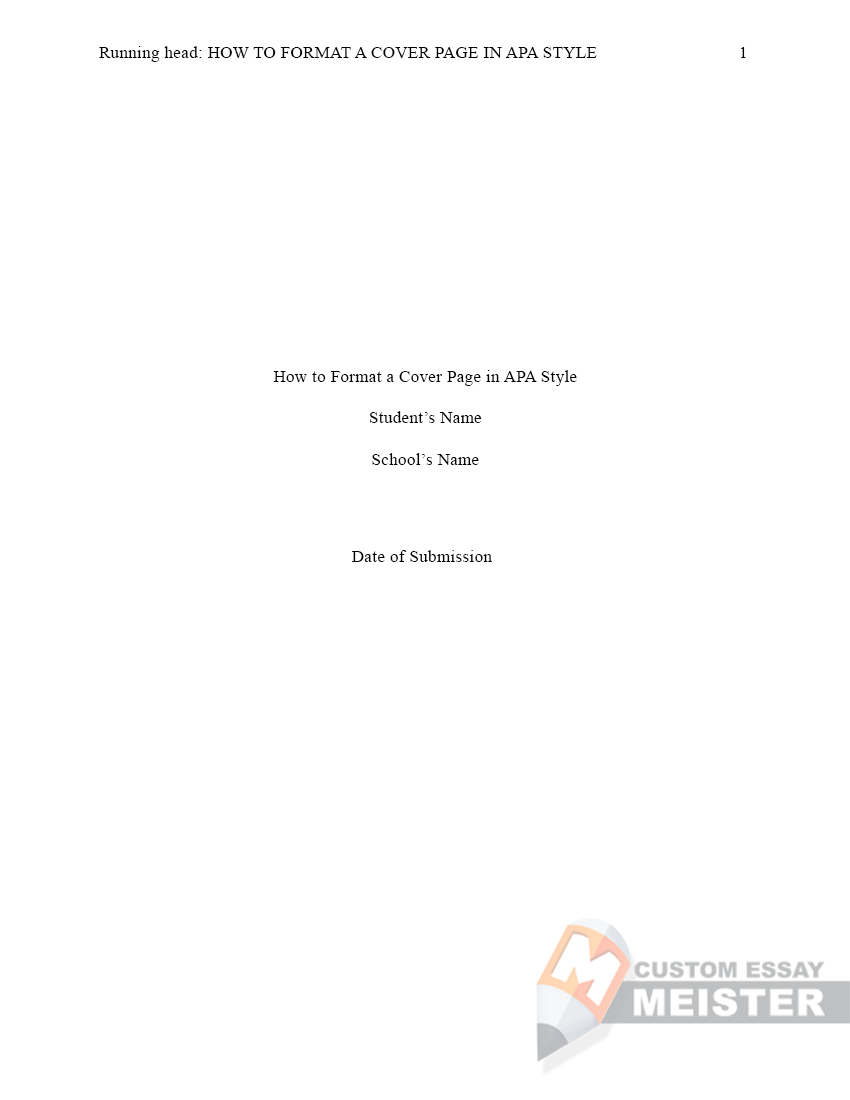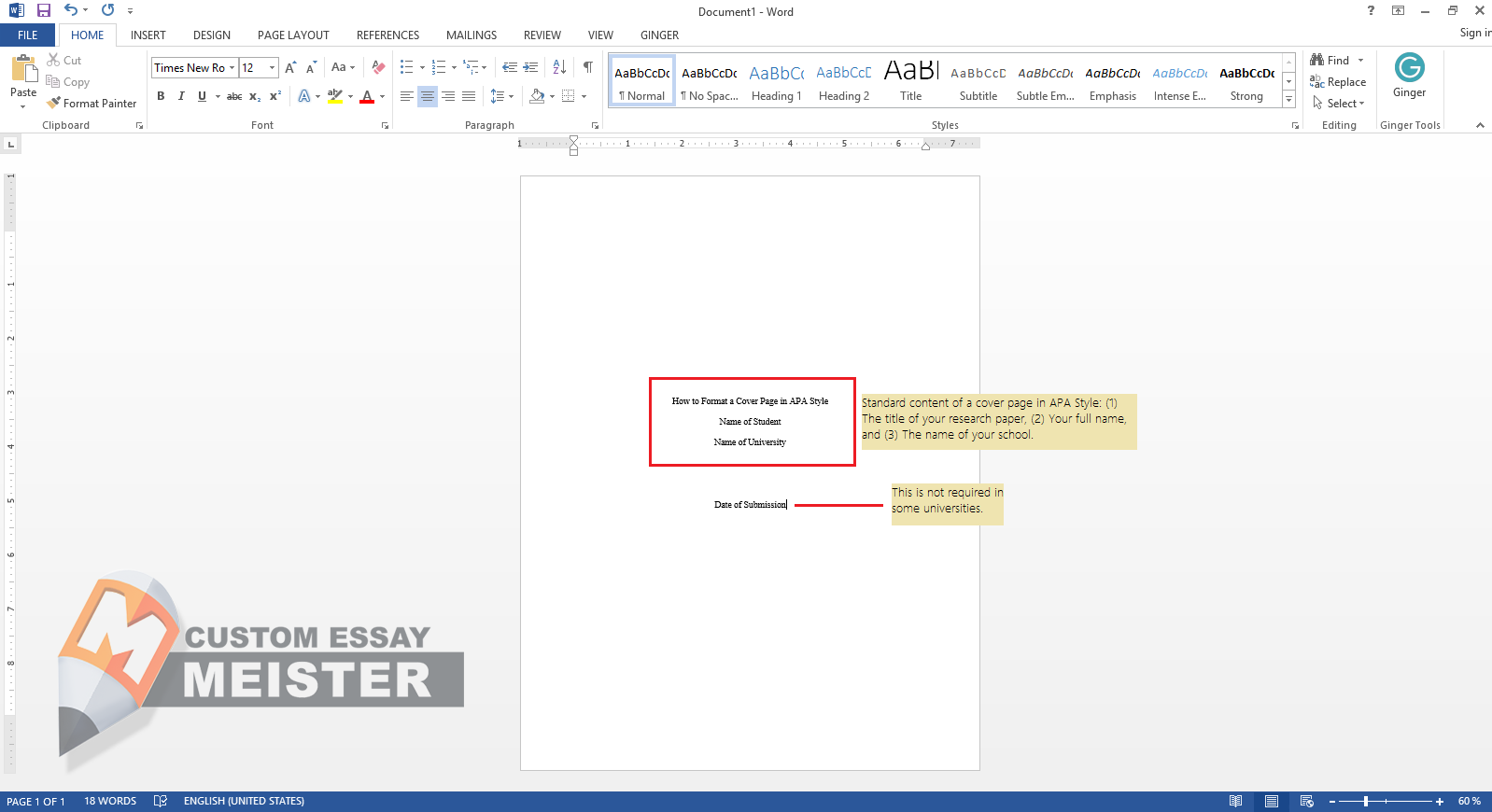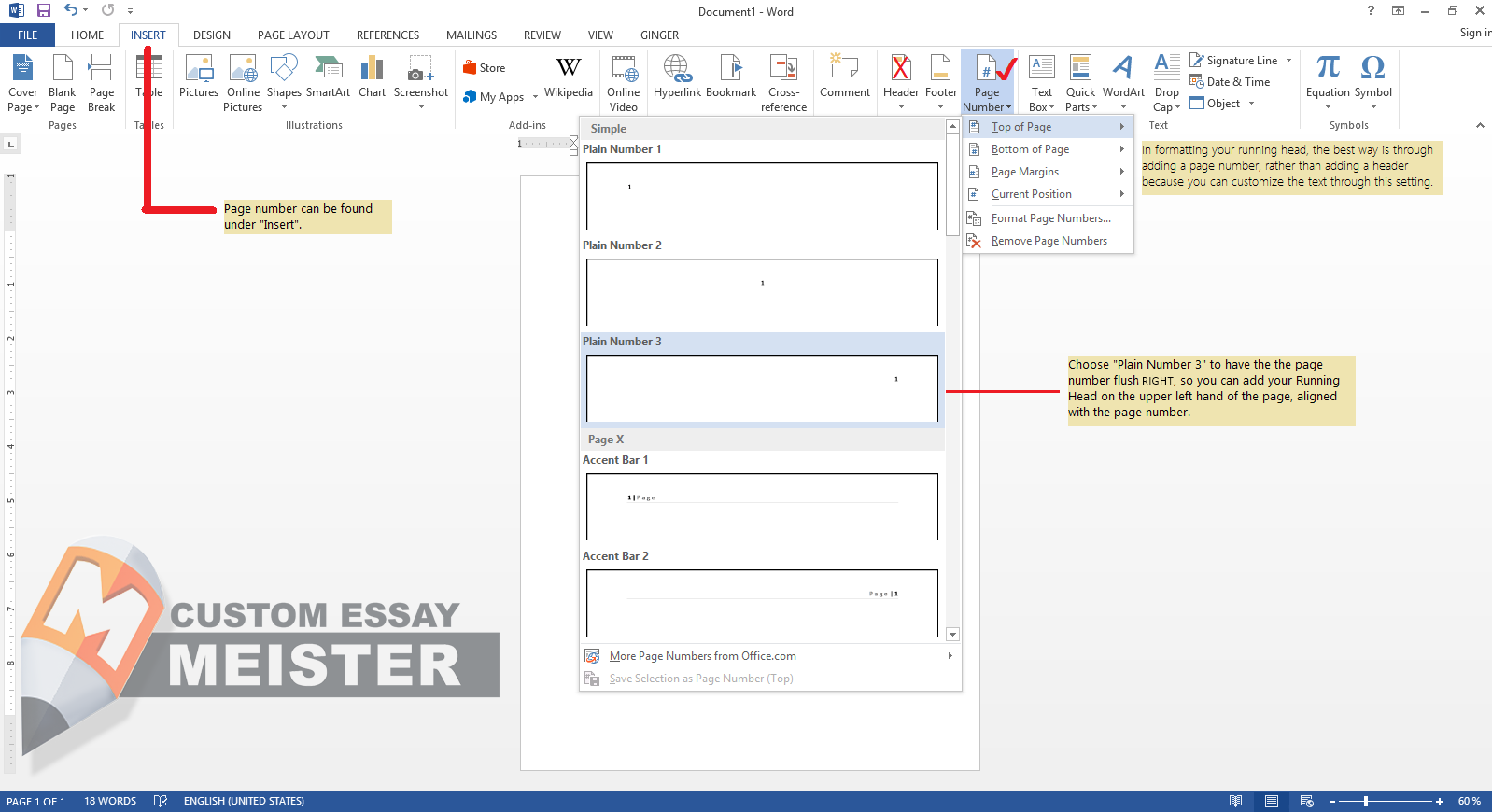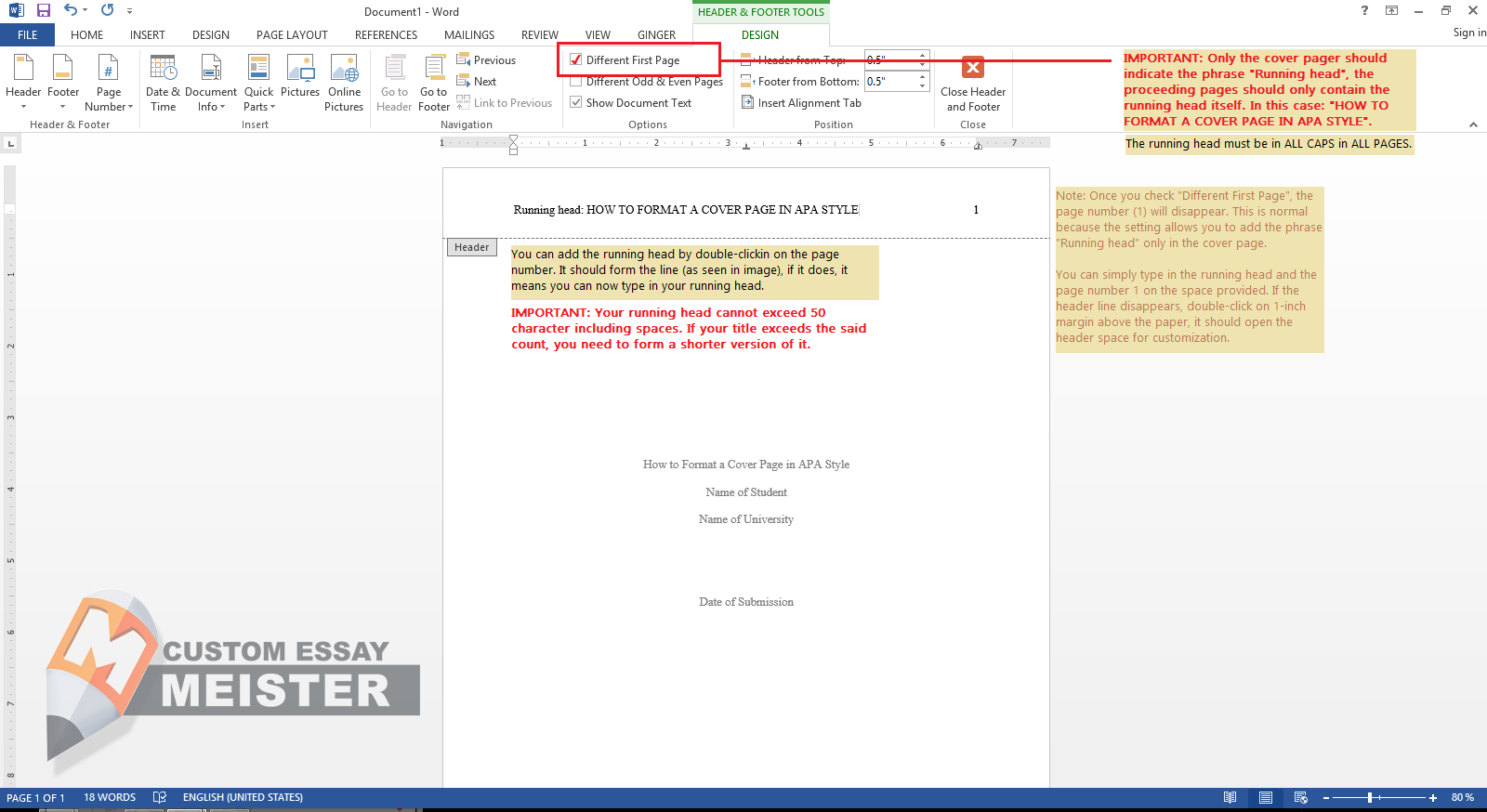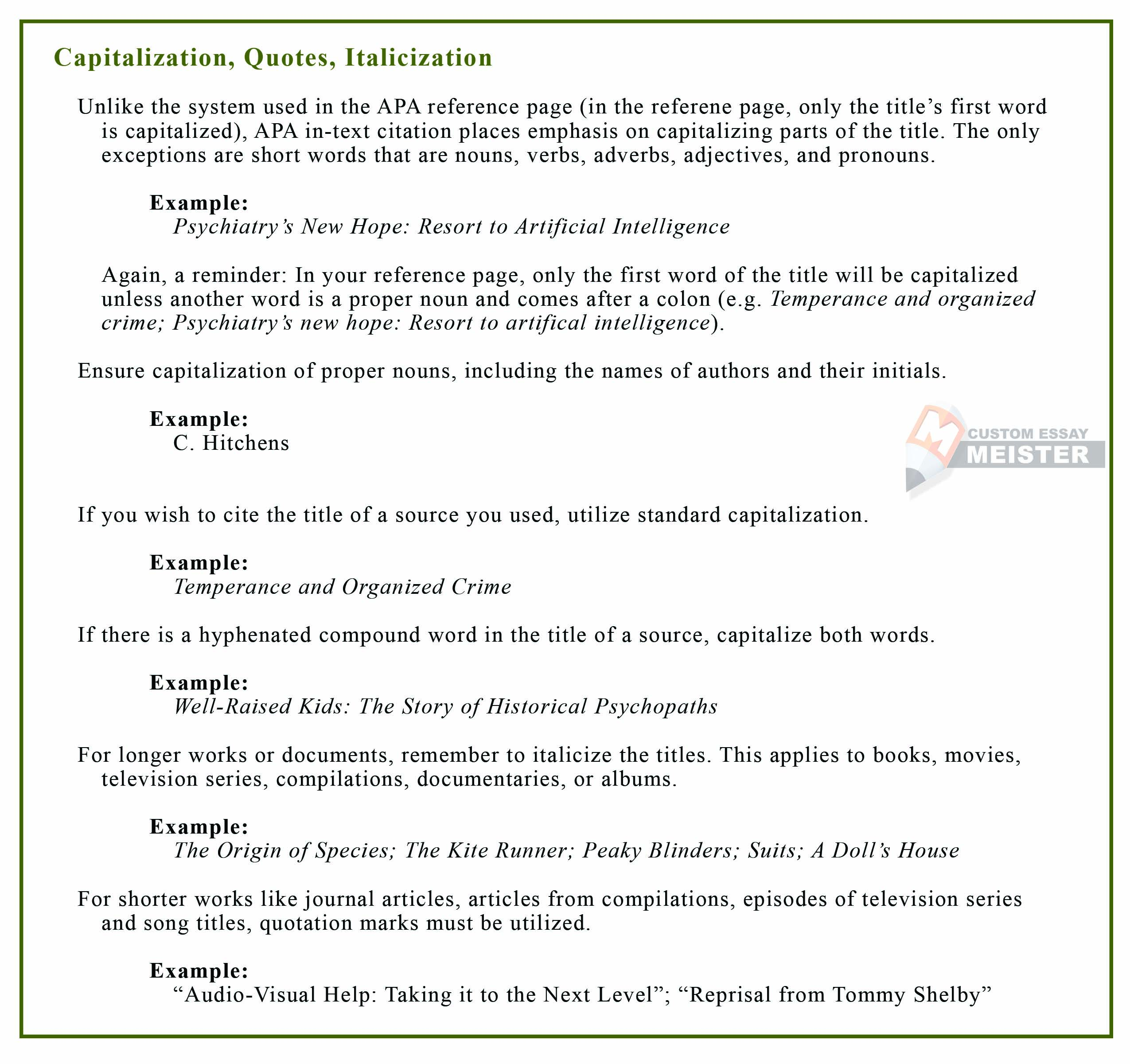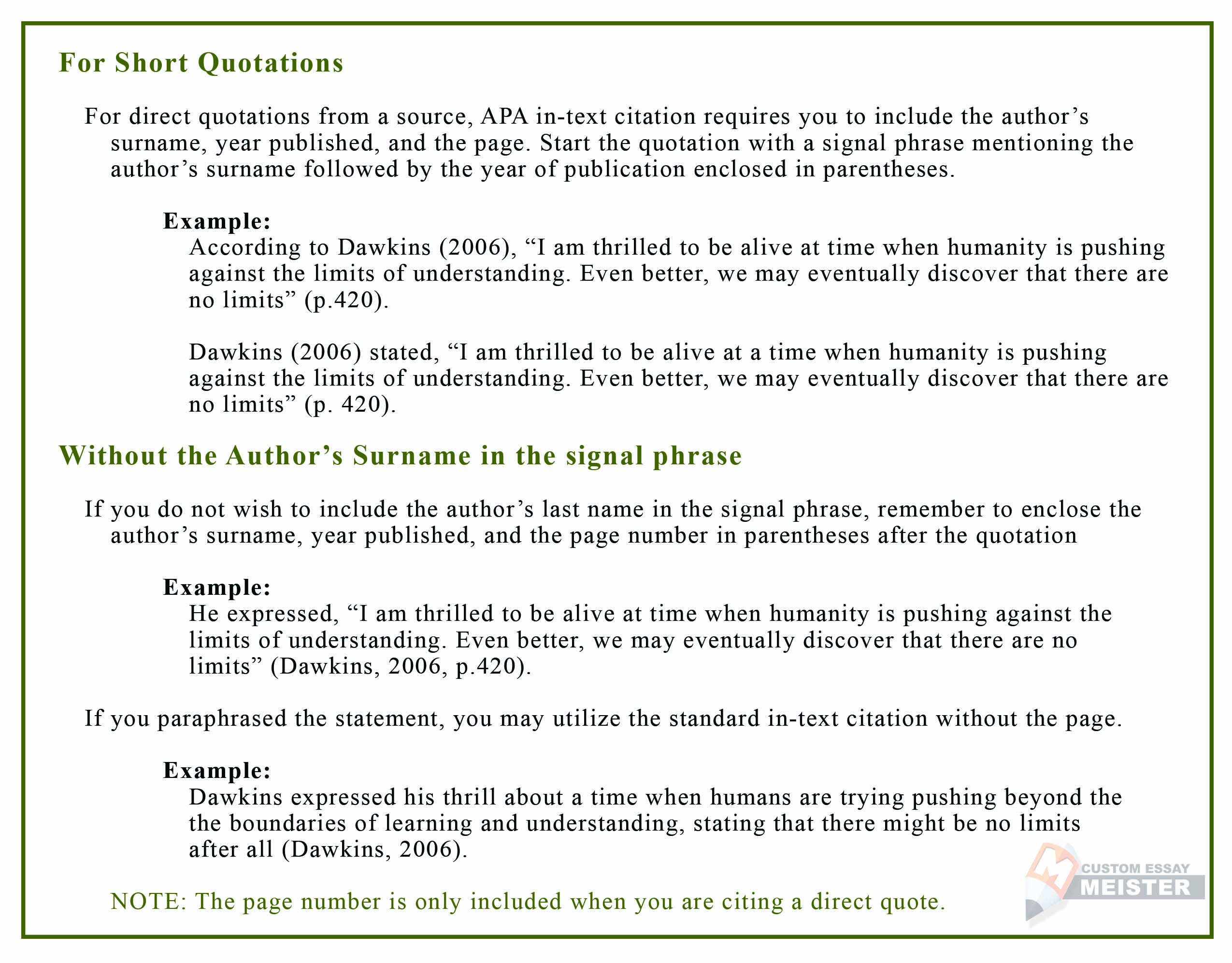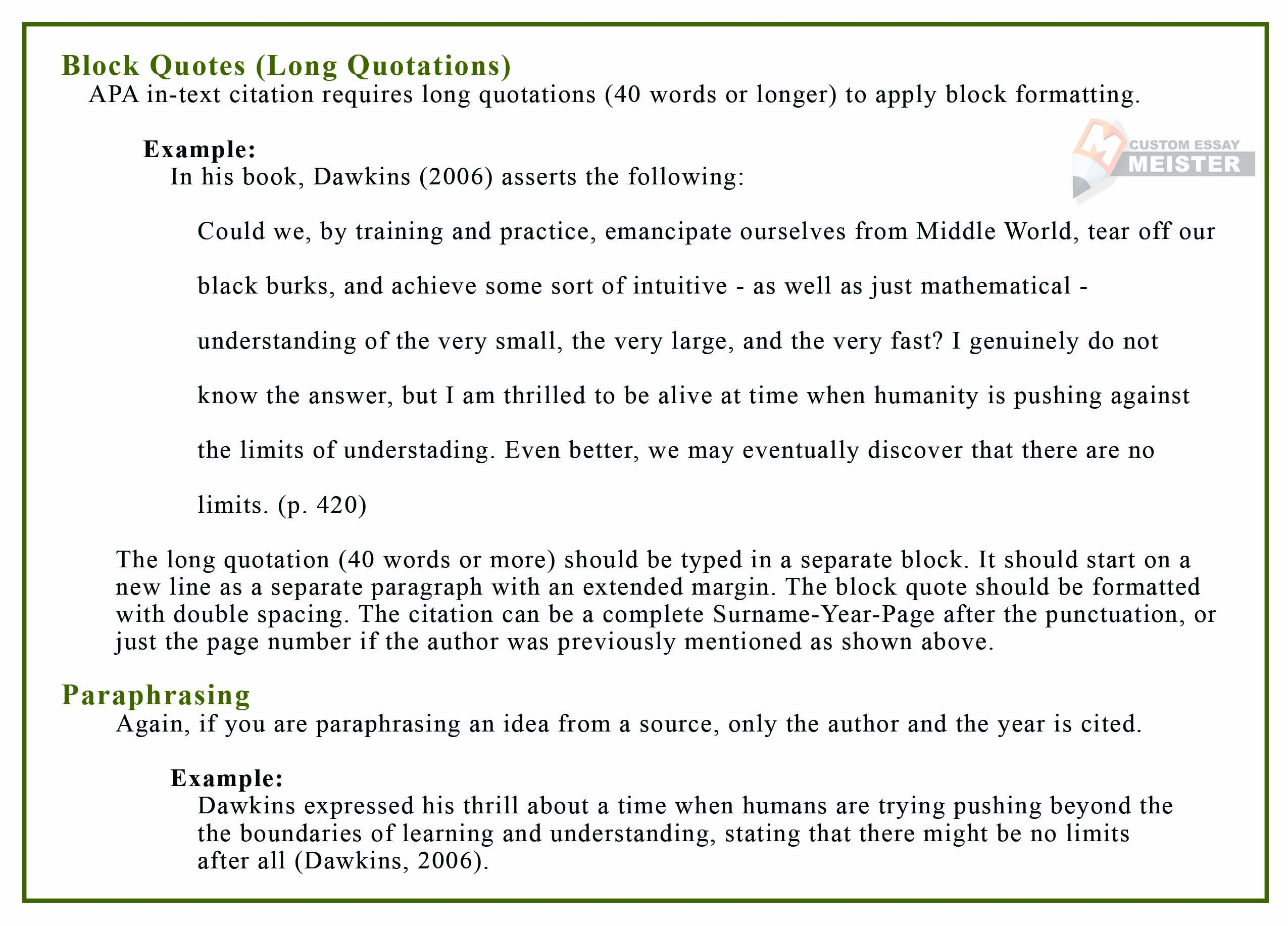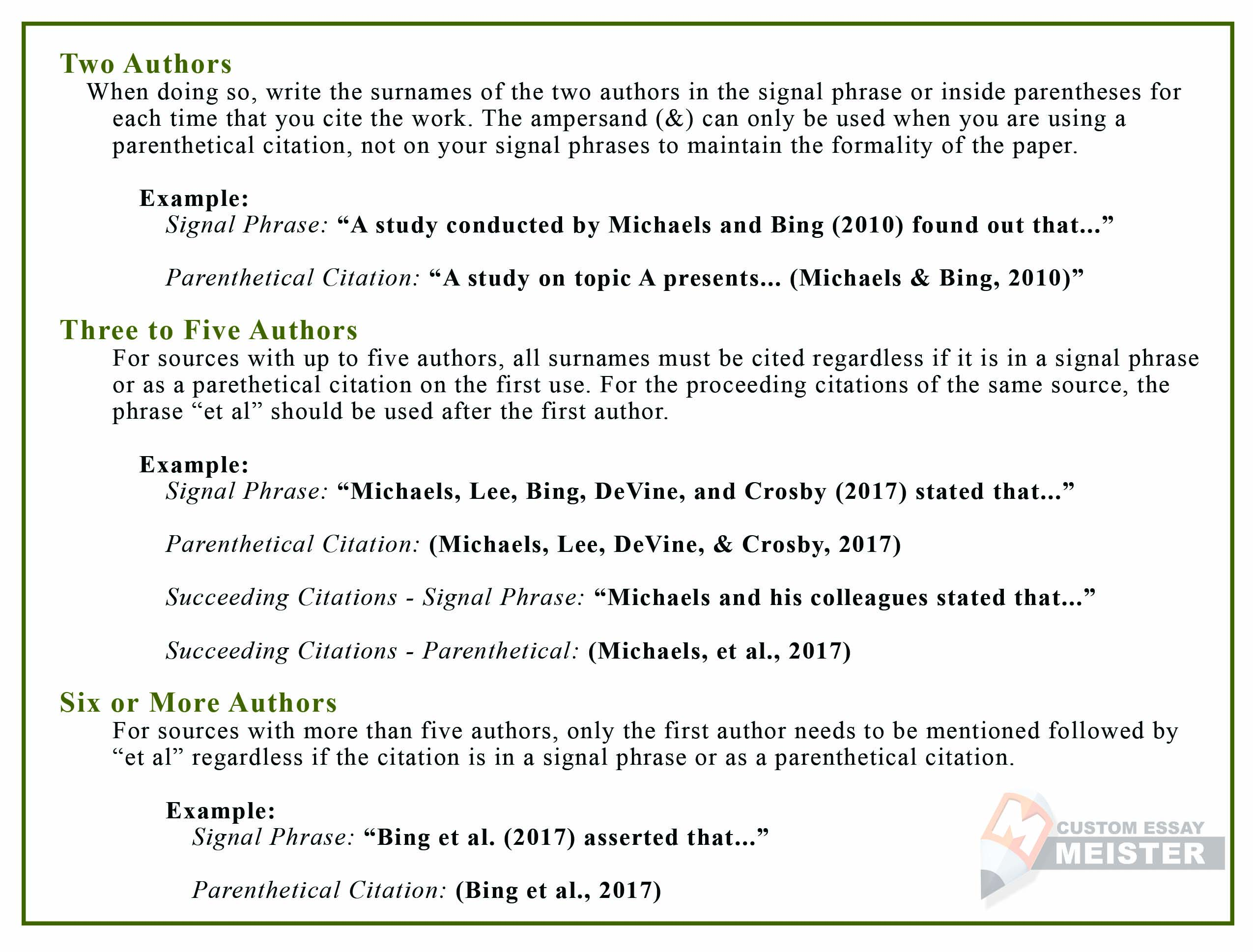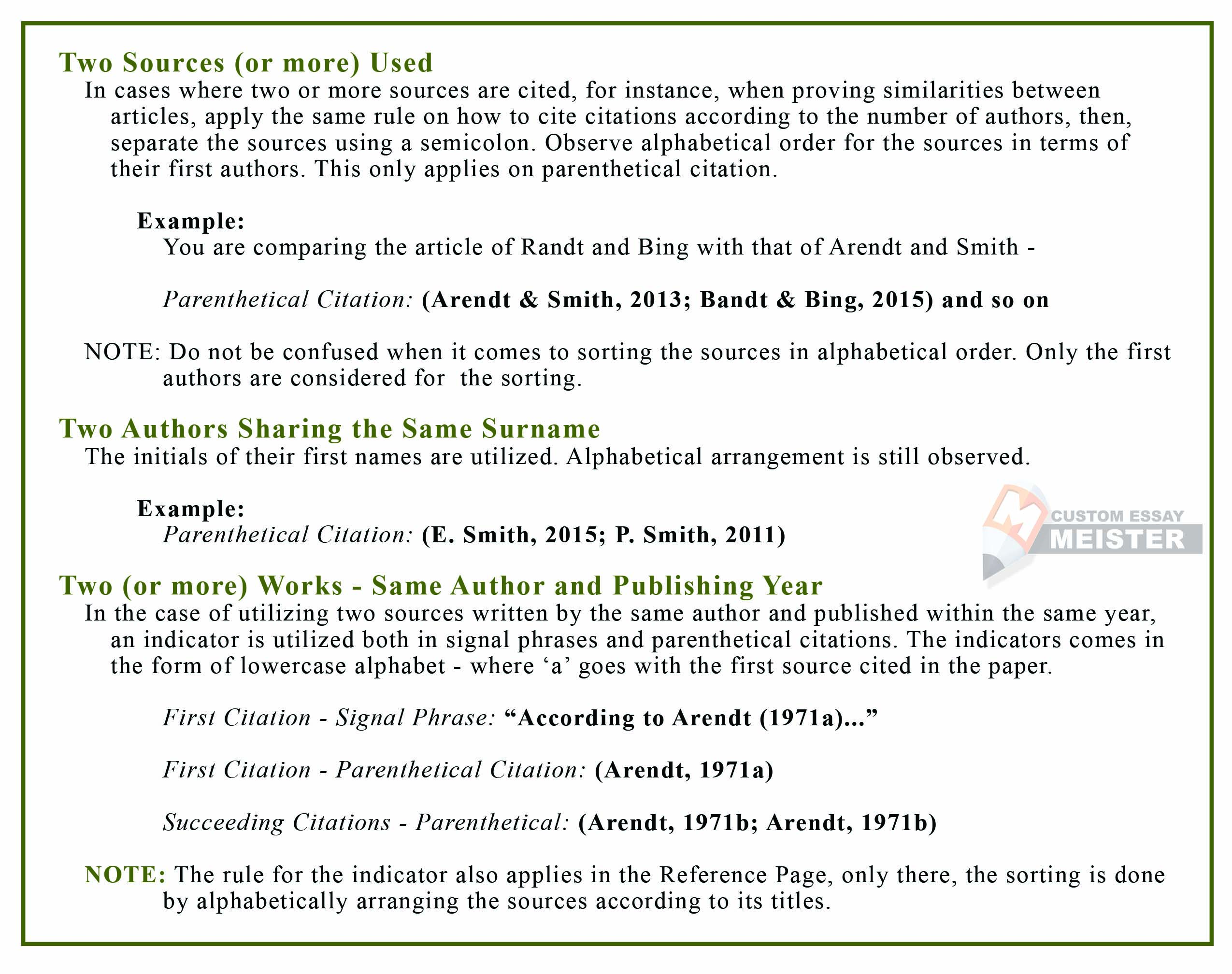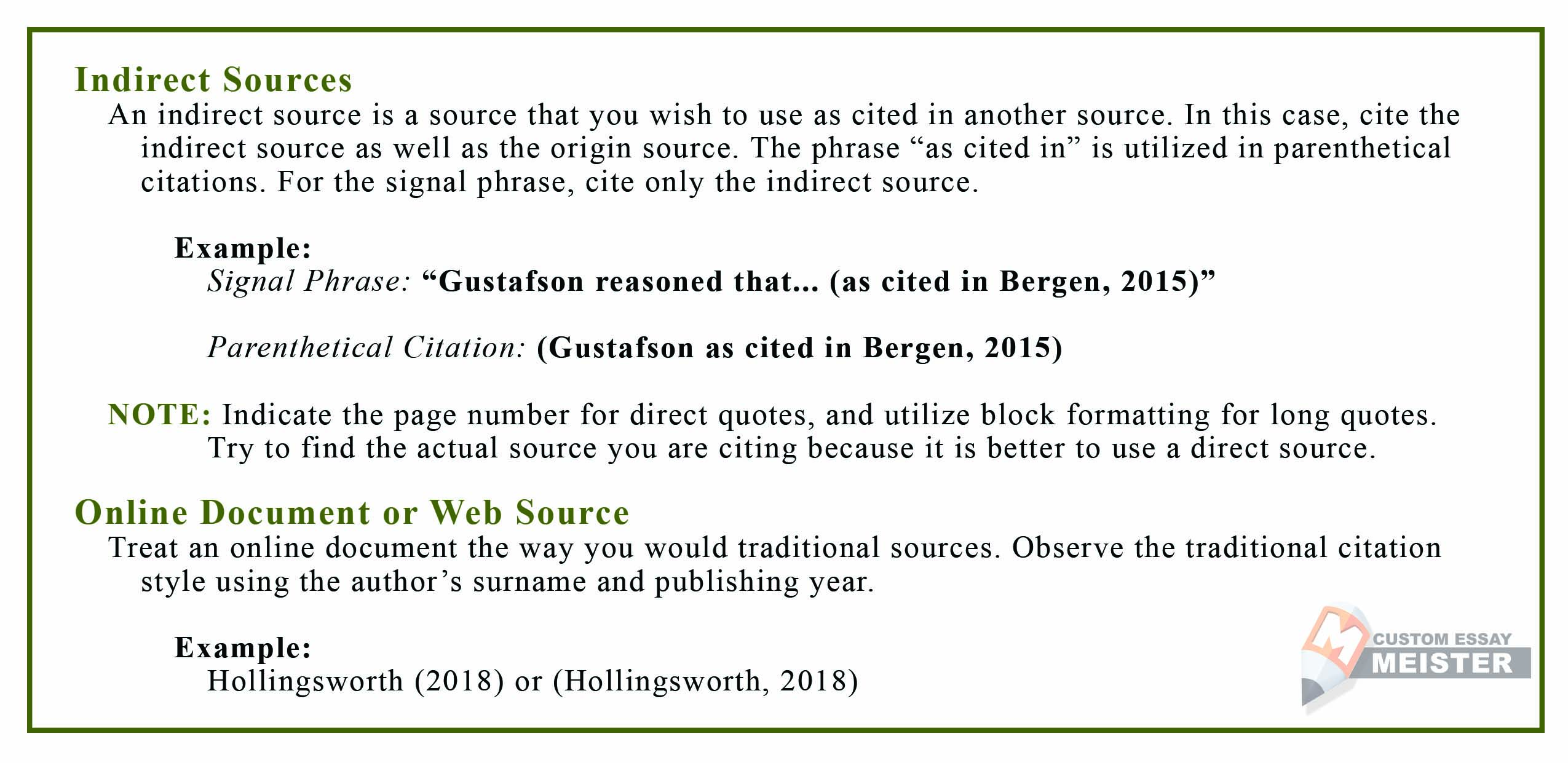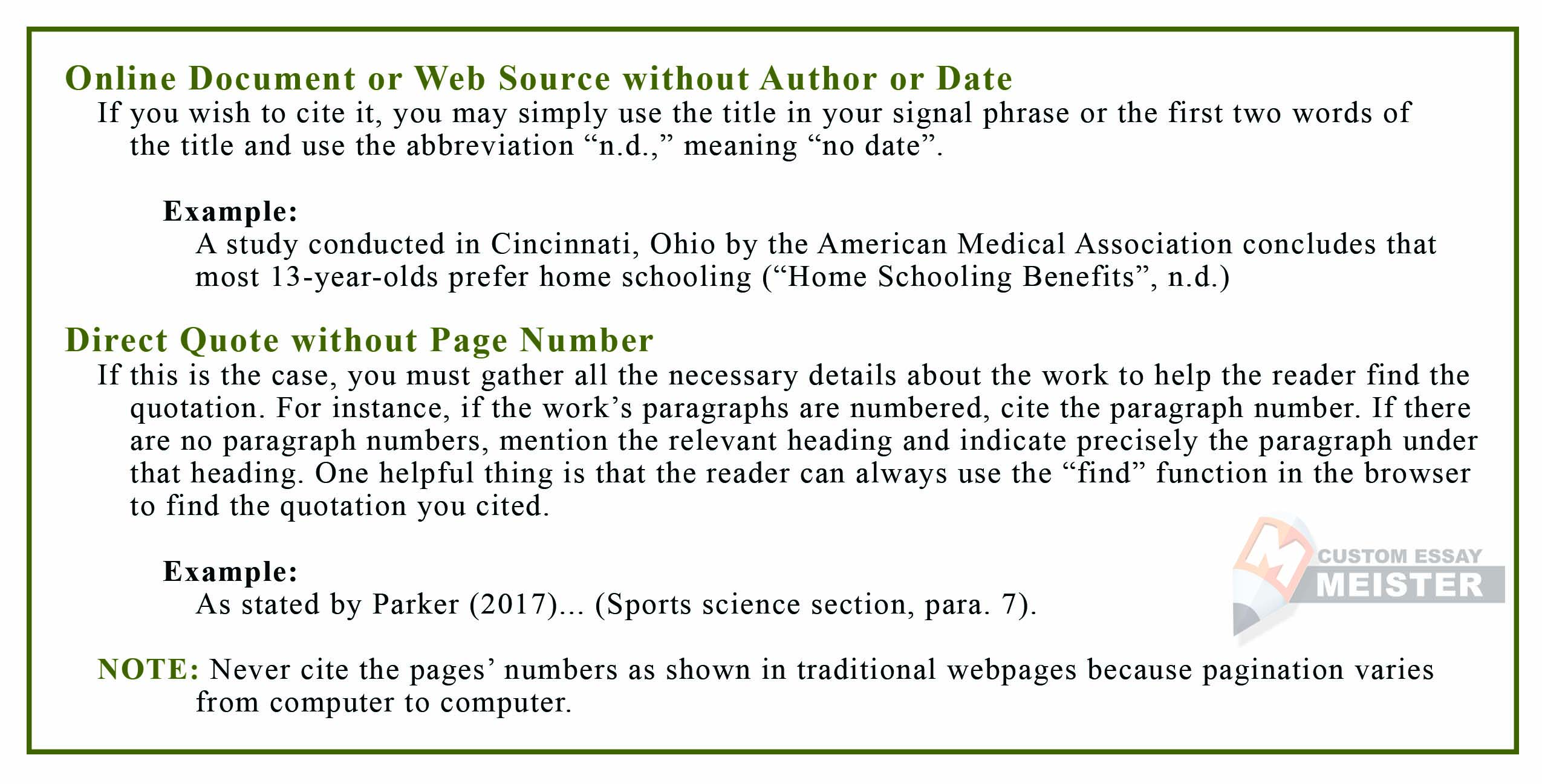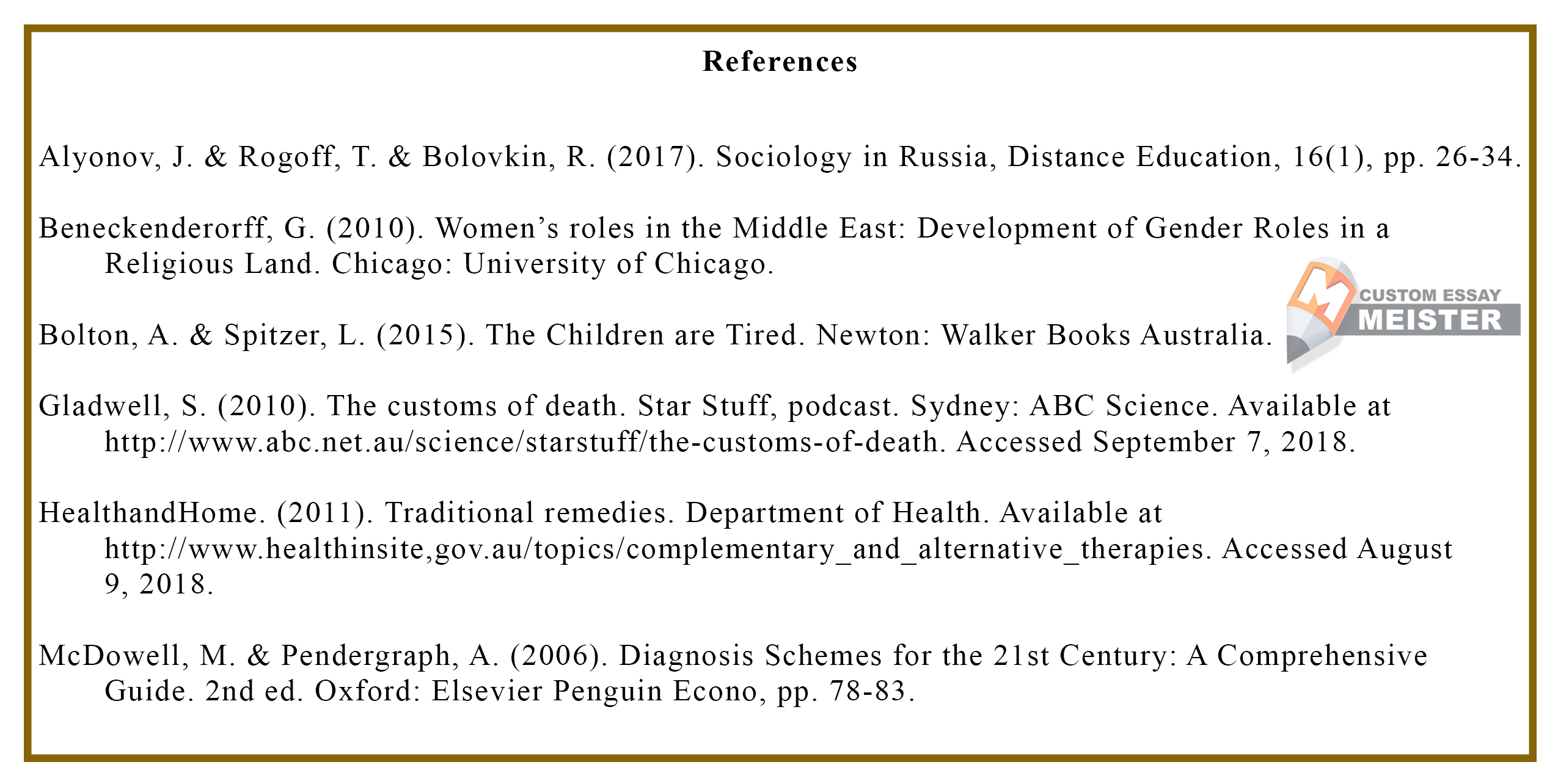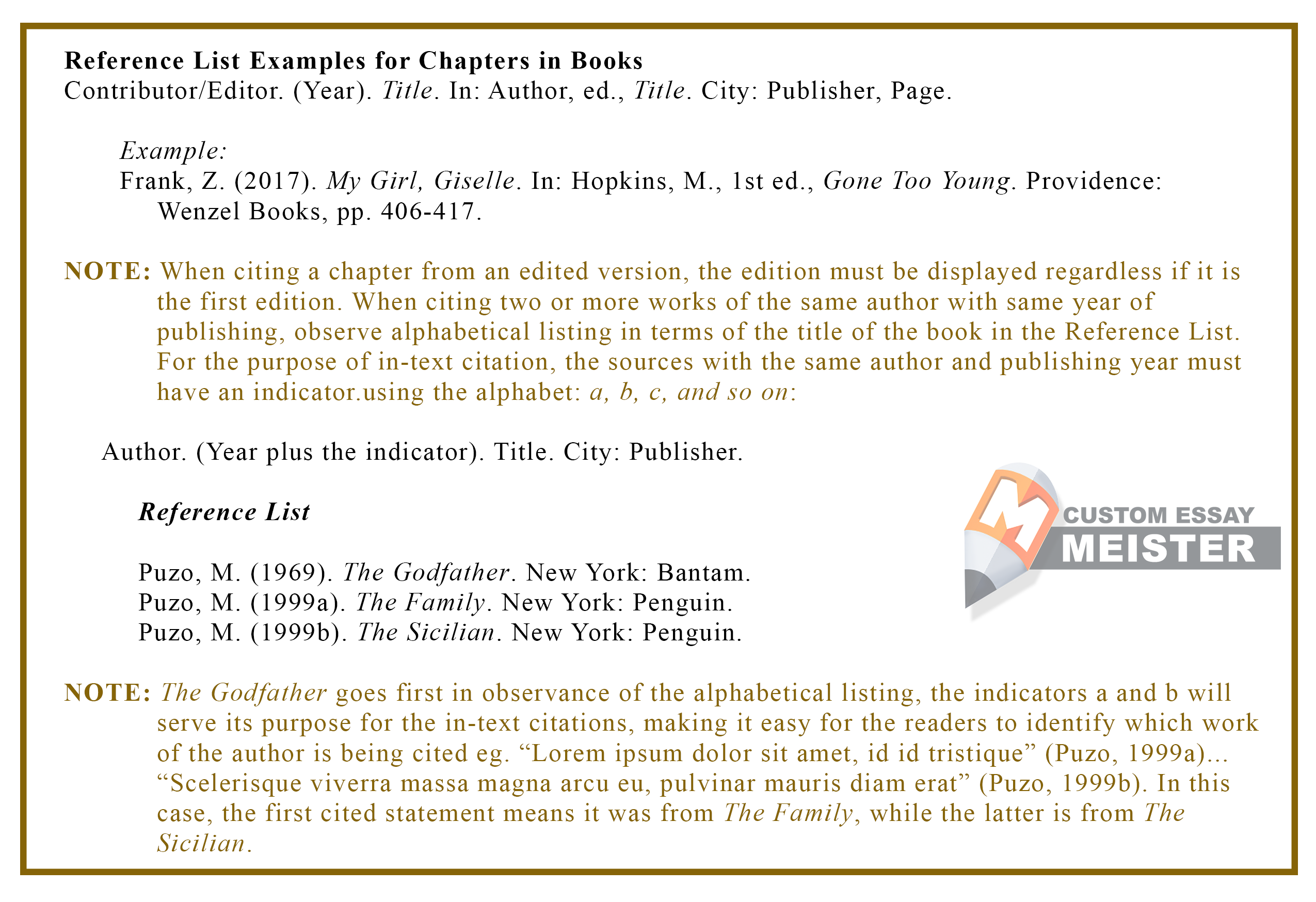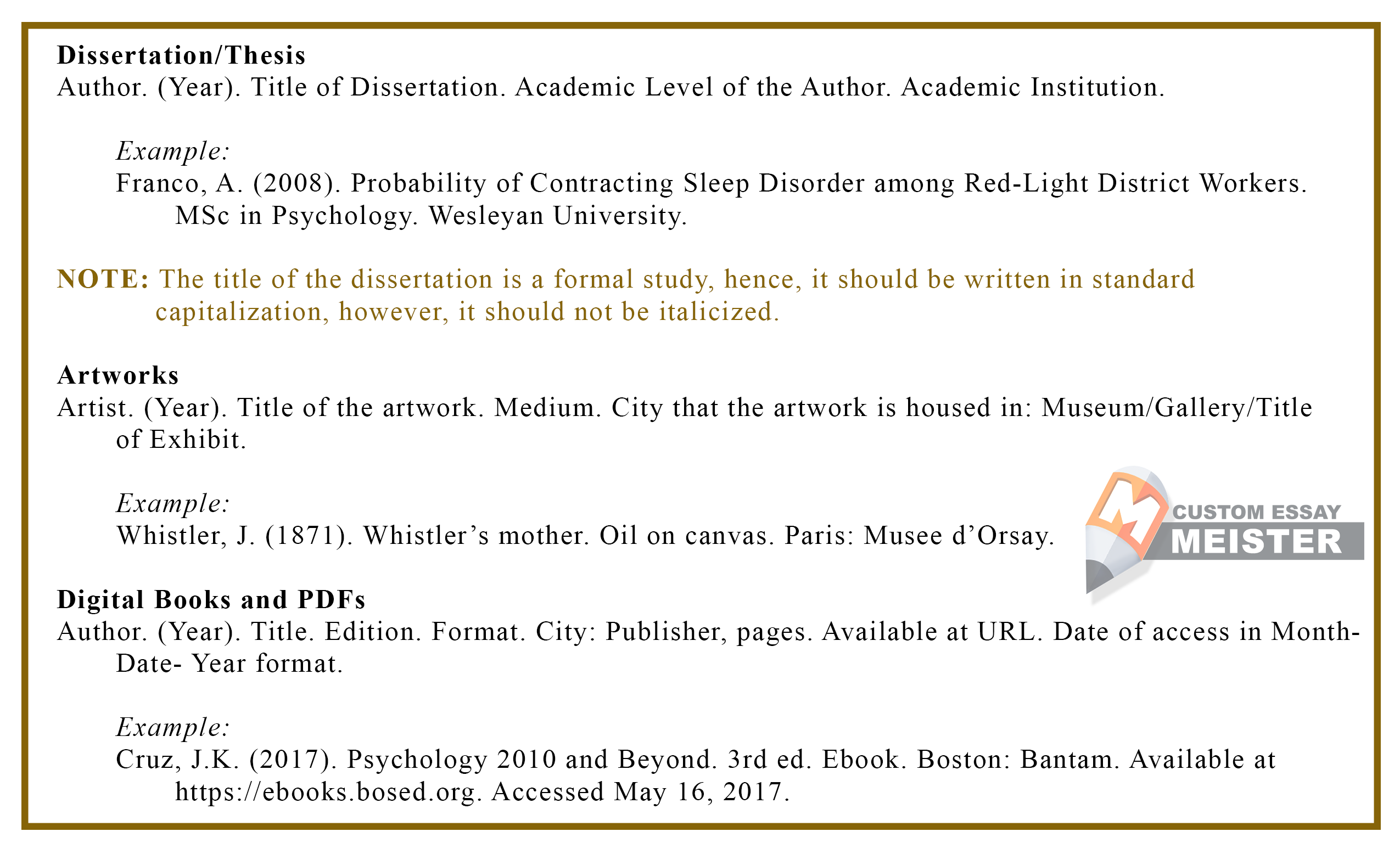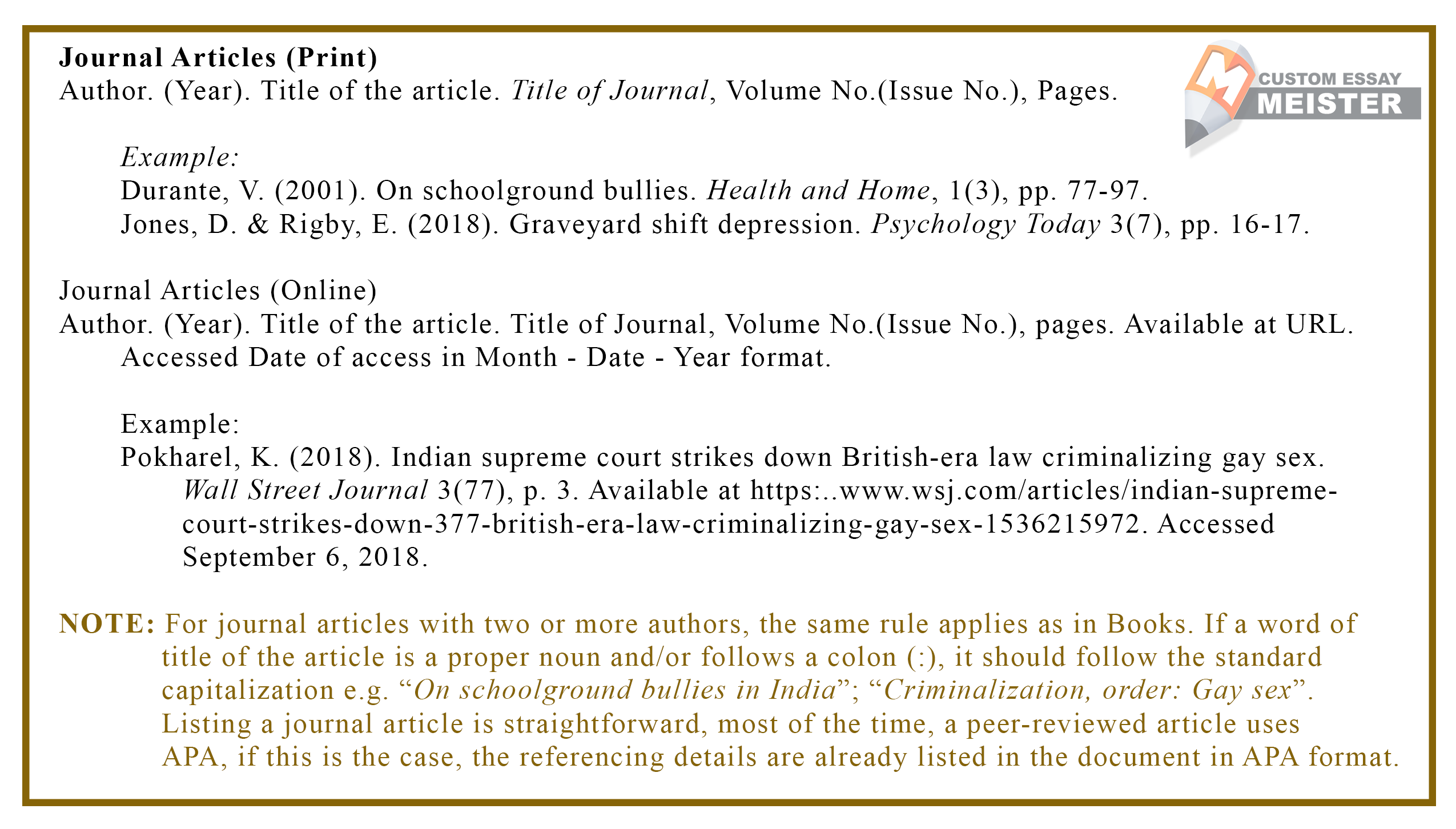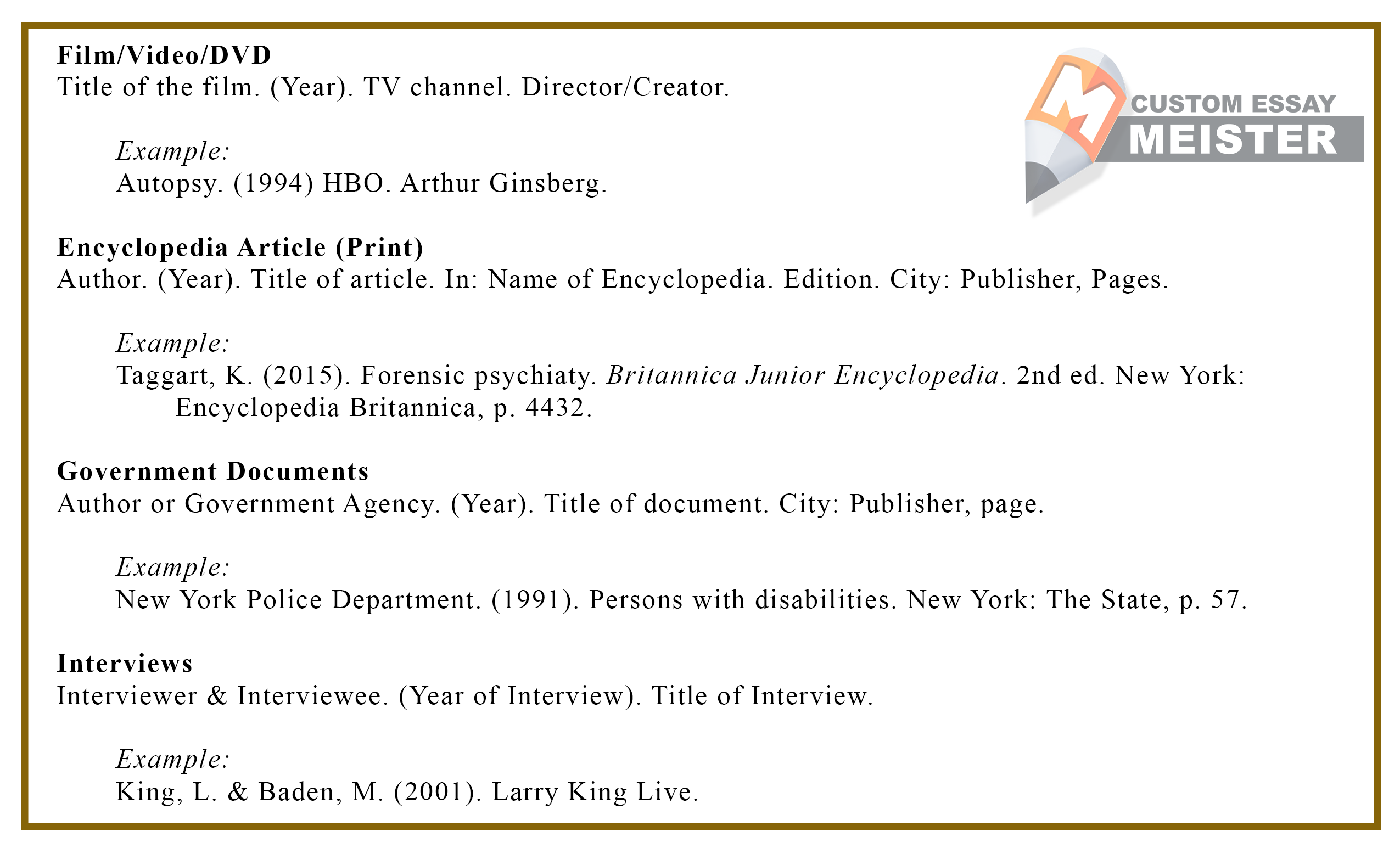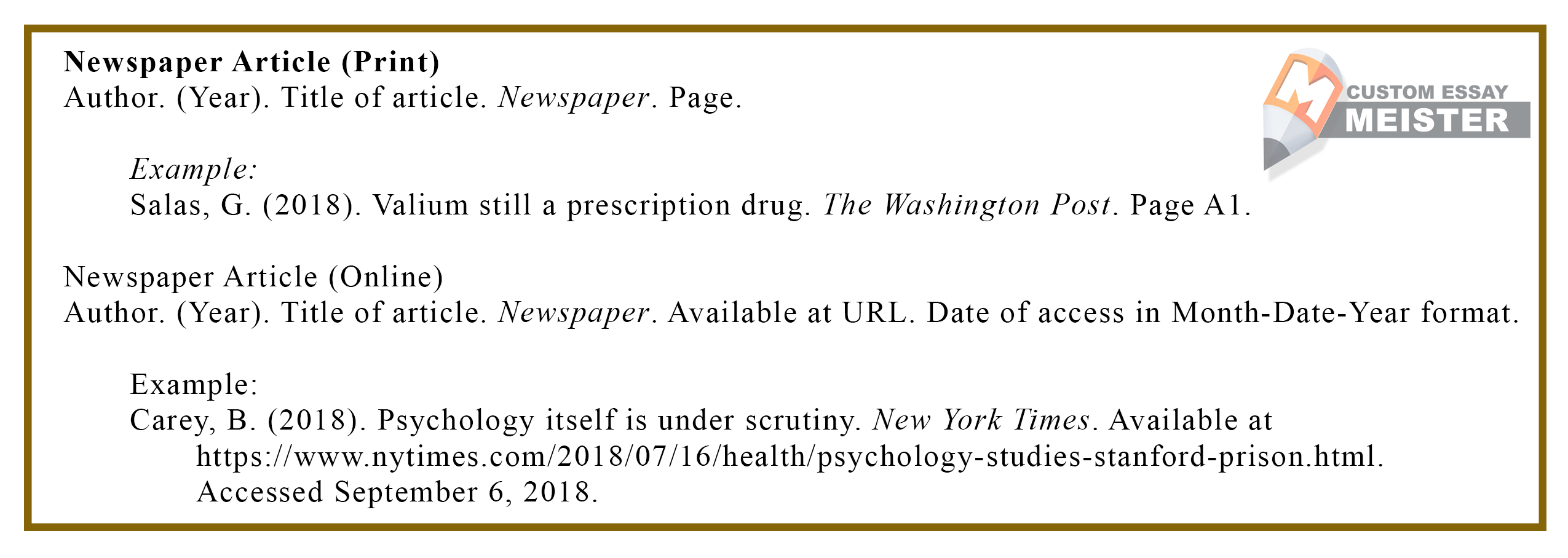APA Citation Style
The APA 6th Edition Academic Style
APA evolved from the Harvard parenthetical referencing system, the American Psychological Association, composed of psychologists, anthropologists and other social scientists convened and worked to develop the standard APA citation style in 1929, essentially breaking free from the Harvard system. It, however, adopted some Harvard attributes.
Here are the characteristics of an APA Reference page:
- Quite similar to Harvard, “References ” is the title of Harvard reference list. “References” should be on the center of the first line.
- The APA Reference page is located on a separate page at the end of the document.
- Every entry starts flush left, aligned with the margin. However, the succeeding lines should be indented half an inch.
- In an APA Reference page, each entry should double-spacing and the same format is observed between entries.
- Your APA Reference page should be in alphabetical order. The list should be based on the authors’ last names.
- The author’s last name comes first, then the initials. If the author has a middle name, its initial should be included.
- The titles for the following should be italicized : books, audio-visual material, Internet sources and newspapers, and the title, and volume number of magazines and journals.
- The titles of the following should not be italicized: newspaper articles, essays , poems, short stories, chapters of an Internet document, magazines, and journals.
- Capitalize only the first letter and proper nouns in these works: essays, books, websites, poems, reports, chapters from books. Examples of proper nouns are names of people, places, and organizations.
- When citing multiple authors, use an ampersand (&) to denote “and.” For example: Johnson, K. & Kemp, V.
The APA Style Cover Page
This is how your cover page should look like should your academic assignment requires you to utilize a cover page:
Note that an APA style cover page has a format different from the rest of the paper, specifically the running head. See this step-by-step guide for your APA cover page:
Step 1. An APA cover page usually has three items by default - the title of your paper, your name, and the name of your university. Some universities require its students to add the date of submission as well as the total word count of the paper on the cover page.
Step 2. Adjust your page number. This is where you will add your running head.
Step 3. Adjust the running head. Note that the word "Running head" should only be visible on the cover page. The rest of the should not have the said word, leaving just the title capitalized.
This is how it should look like.
The APA In-Text Citation
Here are the guidelines on how to perform APA in-text citation. In APA in-text citation, the traditional author’s last name-date of publication is followed. Remember that all these sources should also be cited in the document’s reference page. This is how a standard APA in-text citation looks like:

APA Rules on Direct Quotations
APA Rules on Block Quotes and Paraphrasing. Note that any direct quote that exceeds 25 words must be written in block format, and anything within that count must be enclosed in quotation marks.
APA Rules on In-Text Citations for Two to Six Authors
APA Rules on In-Text Citations for Unknown Authors

APA Rules on Multiple Sources In-Text Citation. Citing multiple academic sources adds credibility to the information.
APA Rules on Indirect Source
APA Rules on Citing Online Documents (without source or page number)
The APA Reference Page
Before we go into the details, this is how an APA reference page should look like:
APA Rules on Citing Books. Note that for six or more authors, you can simply cite the first author then use the term "et al." such as (Aarons, et al., 2010).
APA Rules on Book Chapters
APA Rules on Digital Books, Dissertation, and Artworks
APA Rules on Journals
APA Rules on Films, Encyclopedia, Government Documents, and Interviews
APA Rules on Magazines
APA Rules on Newspapers
APA Rules on other Reports
Most research papers utilize this academic style because of its clarity and simplicity, and proper referencing and source citations are of utmost importance . In some instances, failure to cite a source for a single-statement information can be considered as plagiarism. If you have any questions regarding APA style, we'd be glad to talk to you.
Learn the other academic styles: MLA Referencing Guide and Harvard Referencing Guide.
